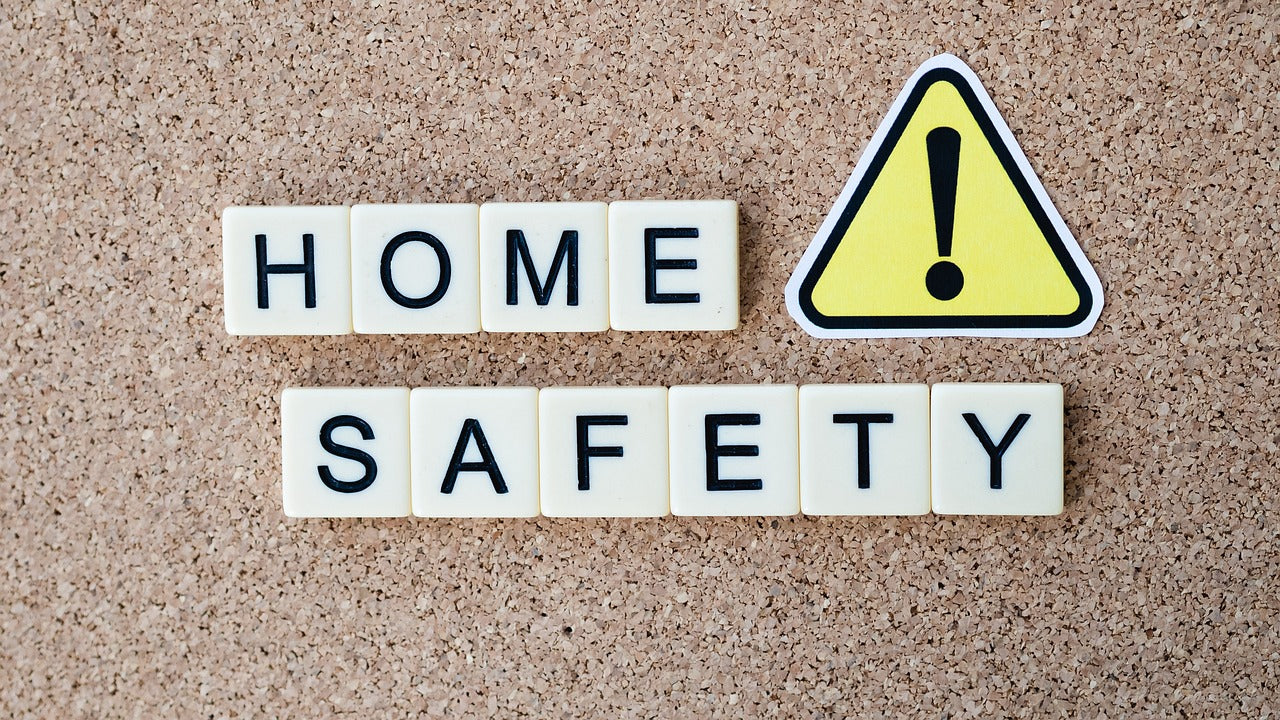Make Your Home Child-Safe.
And here we are again at Sweet Blog, the sweetest blog online.
The place to be for all fans of the 'Home Concept.'
Today, we delve into a topic of utmost importance. A critical issue that should be at the forefront of your home design strategy:
Safety aspects associated with your little ones, whether they are toddlers, preschoolers, or school-aged children.
As we all know, home safety Issues are among the most critical aspects of any home design process, especially kids' safety.
Regrettably, in their innocence, children may not always grasp What is safe and what is not. Without clear boundaries in the form of well-designed and planned spaces, they can unwittingly put themselves at risk in a multitude of ways.
Needless to say, It's something we all want to avoid.
This article is designed to empower you, the parent or caregiver, with tips and tricks to create a home environment that is as safe as possible for your children. Your role in this process is crucial, and we're here to support you.
It's important to clarify that we're not here to reinvent the wheel; we're here to share our insights and contribute to the ongoing conversation about home safety for children.
By the end of this article, you'll be equipped with the knowledge and tools to create a safe haven for your little ones.
'Make Your Home Child-Safe - Baby Proofing Your House: Checklist and Tips'
Table of Contents
1. Home Safety Accessories.
Suppose you recently visited a few home Decor stores. In that case, you must have noticed that the field of safety products is constantly flourishing.
The variety is enormous, from stickers to prevent bath slipping, through entry restrictors/stair racks, And ends with child finger protectors against heavy doors.
It's also important to note that the trendiest safety products out there are mainly those characterized by various technological safety capabilities, such as advanced sensors.
'Mechanical' safety products are no longer at the top of the list. And even 'artificial intelligence' has found its way in, with products like smart doorbells that can detect motion and send alerts to your phone, or smart locks that can be controlled remotely, becoming popular choices for parents.
First, empower yourself by understanding the specific safety vulnerabilities associated with your child's character.
Suppose he is endowed with excessive curiosity, one that makes him want to check and feel everything - In that case, objects like dangerous electrical outlets - will become your focal point to deal with.
If he is overly hyperactive in such a way that reaching or climbing unsafe places is his weak spot, A preliminary design response, which includes special adjustments towards this unhealthy need, will be required.

Find good safety accessories
Remember, the rule of thumb is to be prepared and understand your specific needs. This proactive approach will keep your home safe for your little ones.
2. One Picture Is Worth A Thousand Words.
When it comes to teaching children about household safety, visual illustration is an invaluable tool.
While safety objects can provide immediate protection, they may not foster a deep understanding of safety. However, by using visual illustrations, you can turn safety into a positive learning experience for your children, paving the way for them to make more informed safety choices in the future.
Rest assured, in some instances, visual illustrations can be more effective than homemade safety devices in preventing accidents. For example, a clear illustration of an electrical outlet's danger can sometimes be just as impactful as a physical barrier. This knowledge should bring you a sense of security and ease, knowing that visual illustrations are a powerful tool in keeping your children safe.
'So how do we do that?' you must be asking.
In one word - 'Illustration.' It's a simple and straightforward approach that can make a significant difference in your child's safety.
As a parent, you can create these visual aids. Illustrate to your child, with the help of written words (preferably printed and creative) and photos, regarding household safety hazards.
Here are some examples:
1. In addition to the mechanical accessories mentioned above, put a sticker next to the socket that indicates the danger inherent in uncontrolled exposure to electricity.
2. hang up a cute little sign indicating the prohibition of walking without adult supervision in some places next to the balcony window from which the road to a dangerous space is relatively short.
3. Next to the staircase (which connects your house floors), place some small inscriptions describing the dangers of falling from those stairs and the importance of calling Mom or Dad before going up or down.
4. If your child is too young to read, many visual accessories, such as creative and cute icons/pictures, can help illustrate the warnings superbly.
5. You're probably familiar with the baby crawling on the floor icon, sending his hand to the electrical outlet, and a large X painted red, smeared all over the picture. Or the one banning climbing to a high shelf that stores a cookie jar.
 Illustrate your child with pictures
Illustrate your child with pictures
There are plenty of similar examples, but the guiding principle emphasizes the need for visual illustrations to make your home safer for your child.
Here, you can read more about the enormous importance of visual illustration in young children's learning processes.
3. Storytelling And Learning.
In the end, it's all about communication, especially with kids.
The more time and effort you put into explaining the various home safety issues to your child, the smoother things will go.
Remember, your child doesn't need to be a communication expert to understand safety. Visual illustrations and storytelling, as discussed in paragraph two, are simple yet effective ways to convey these important matters.
Take your child on a 'guided tour' around the house to all those 'Dangerous' places, and physically show them what is allowed and what is not.
Explain and illustrate (in a way that suits their cognitive abilities) as simply as possible what they are not allowed to do and why.
Not only does effective safety communication bring peace of mind, but it also strengthens the bond within your family. It's a win-win situation.

There is no better mediator of knowledge than a good story
Studies show that such an illustration can significantly help, especially alongside storytelling.
4. Constant Situational Awareness.
As we all know, Reality tends to be dynamic.
Very dynamic.
Things are changing at a dizzying pace, and the same is true regarding the safety condition of our home.
Although it is not trivial, and our home is not an operational war room, it is essential to constantly assess its safety issues:
From time to time, observe and pay attention to the condition of your furniture. Are they too close to the window? Suppose your child Suddenly climbs on one of them. The potential risk of a fall is high, and it's crucial to be aware of it.
Are there heavy objects (such as cabinets/chests of drawers) that are not secure or stable enough - ones your child can easily climb on and make them crash?
Have you checked if there are any exposed electrical wires that could cause danger?
Do you have the necessary safety accessories, such as non-slip mats or grab bars, to prevent bathroom slipping?
The guiding principle is to constantly assess your home in the context of safety risks.
Please do yourself a favor and don't underestimate it. The safety of your loved ones is at stake. What do you have to lose?!
It's a simple matter, which, on the one hand, takes a few minutes at most! On the other hand, it can save lives, and you have the power to make it happen.
Of those dearest to you...

Things change. Be alert.
In conclusion, as explained at the beginning of the article, we do not pretend to reinvent the wheel. Most of the above tips are well known to all. Our intention is only to sharpen some essential points in the field of home safety, Leading to making your home more child-safe.

We hope that this article - 'Make Your Home Child-Safe' - will help you to a certain extent with this issue. And if you have any more questions on the matter, please feel free to reach out.
If you've come this far, you are more than welcome to visit our sweet collections page.
What are you waiting for?
For more fascinating and informative home design articles, visit our sweet blog and subscribe to our sweet community.


Share and get 15% off!
Simply share this product on one of the following social networks and you will unlock 15% off!